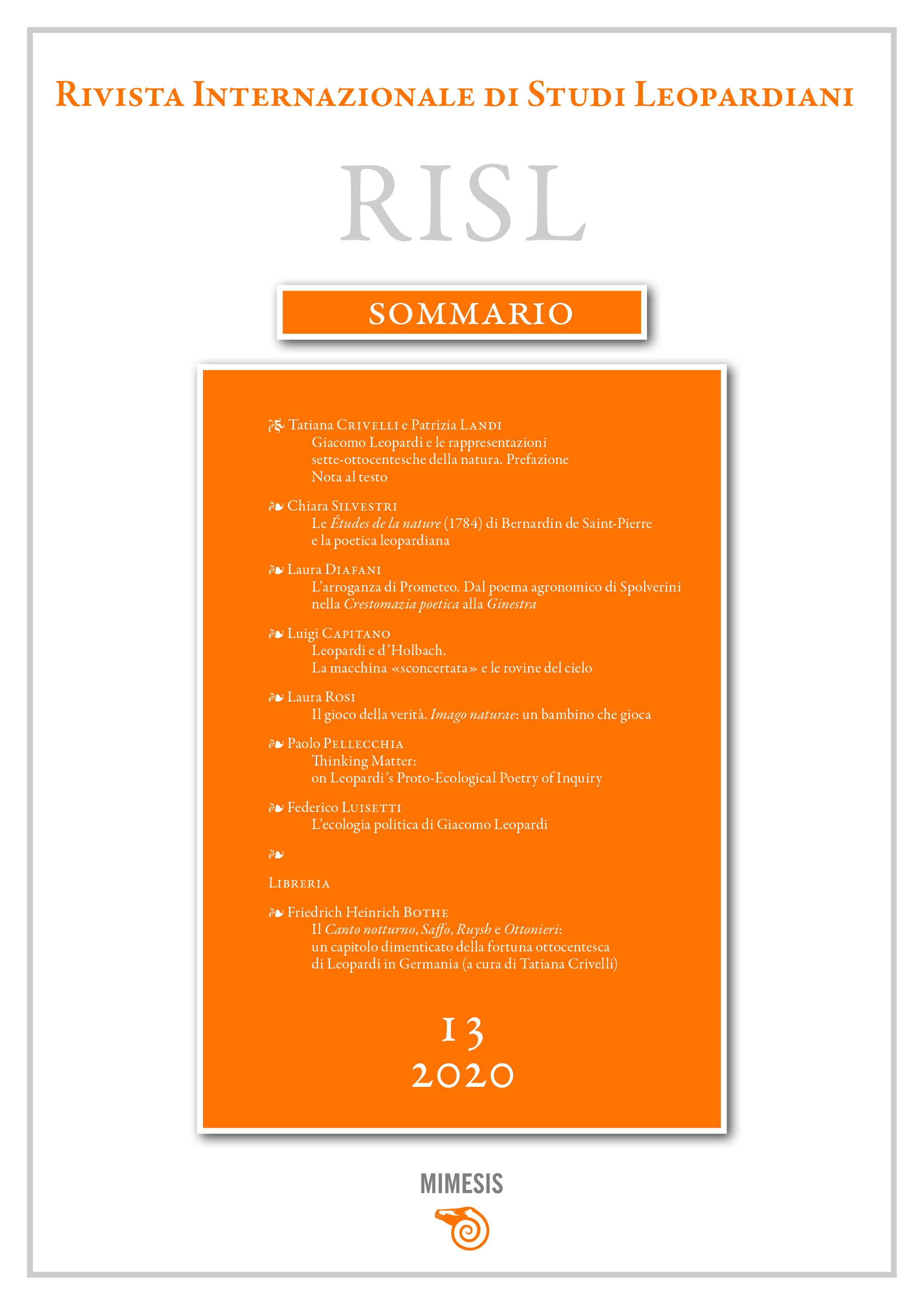Leopardi e d’Holbach. La macchina «sconcertata» e le rovine del cielo
Parole chiave:
Leopardi, d’Holbach, materialismo, stratonismo, natura, catastrofi cosmiche, antinomia vita-materia, caosAbstract
The paper retraces the relation between d’Holbach and Leopardi in order to bring out the transformation that occurred to the modern notion of materialism from the Enlightenment to the Romantic period. This time frame sees a radical paradigm shift from the compact “system of nature”, neatly contained within the mechanics of Newtonian physics, to the emergence of life as an exception, upsetting the notion of matter. D’Holbach’s System, which Leopardi knew from the Dominican Father Antonino Valsecchi, should suffice to explain Leopardi’s Stratonism, with which he is familiar from childhood and to which he was to return from 1825 onwards with his, this time, unmediated reading of d’Holbach’s Good Sense. In this light, what appears to be fictional in the Apocryphal Fragment of Strato of Lampsachus can be re-read as a ‘half-truth’, expressive of the striking contradiction of life vs matter. This clash is meant to undermine the anthropocentric narcissism developed against the background of the spectacular celestial apocalypses, which had already been anticipated by Bayle, Buffon, Robinet, Maupertius and others. But even beyond d’Holbach, the metaphorical death of the sun and the planets in Leopardi’s Apocryphal Fragment does not let nature, however shattered, still stay “always on its feet”. Rather, it shows the most bewildering side of the fall of nature: it opens “the door to chaos”, in the wake of a prophetical hypothesis about Strato first formulated by Pierre Bayle. It adumbrates the nihilistic ruination of the foundations of metaphysics.






